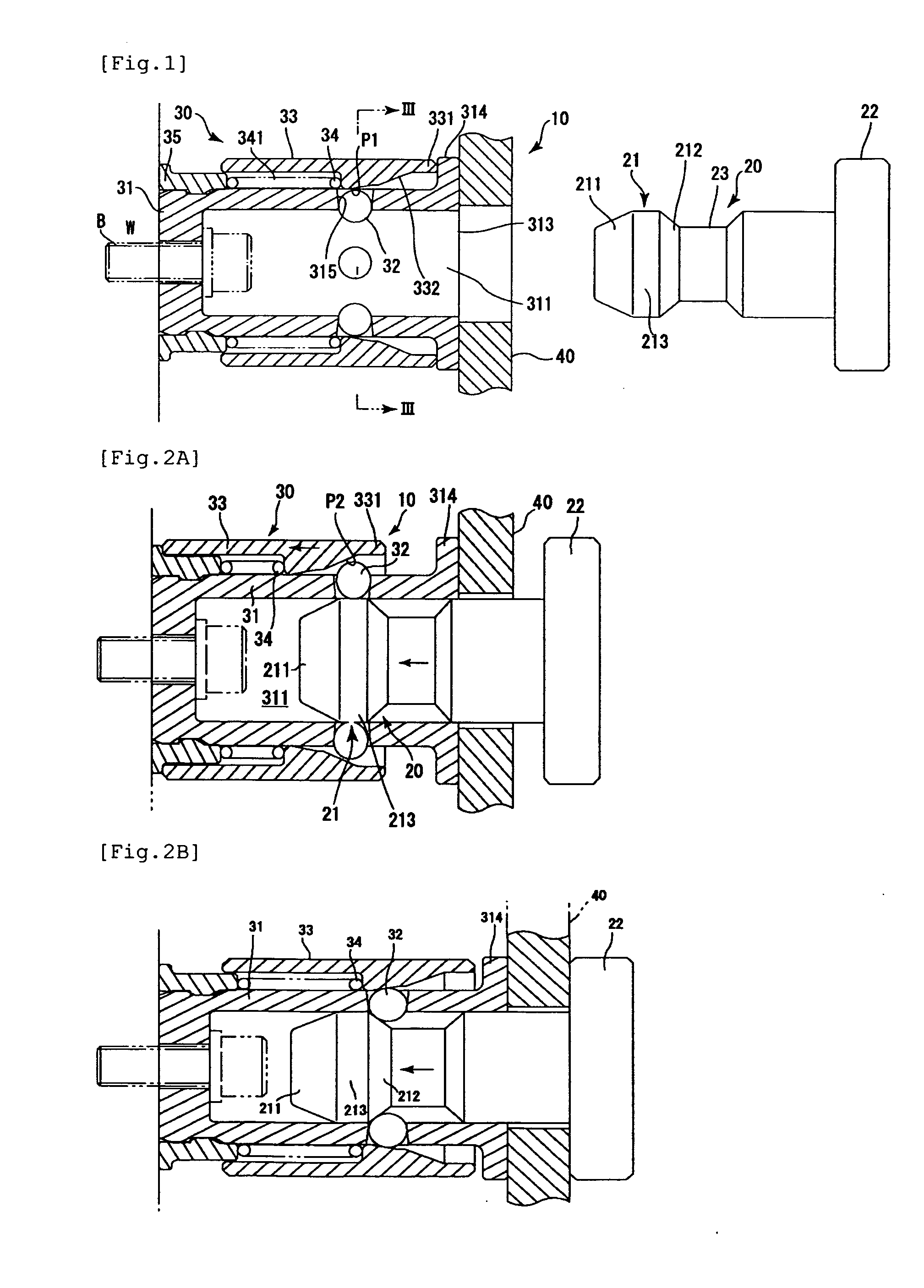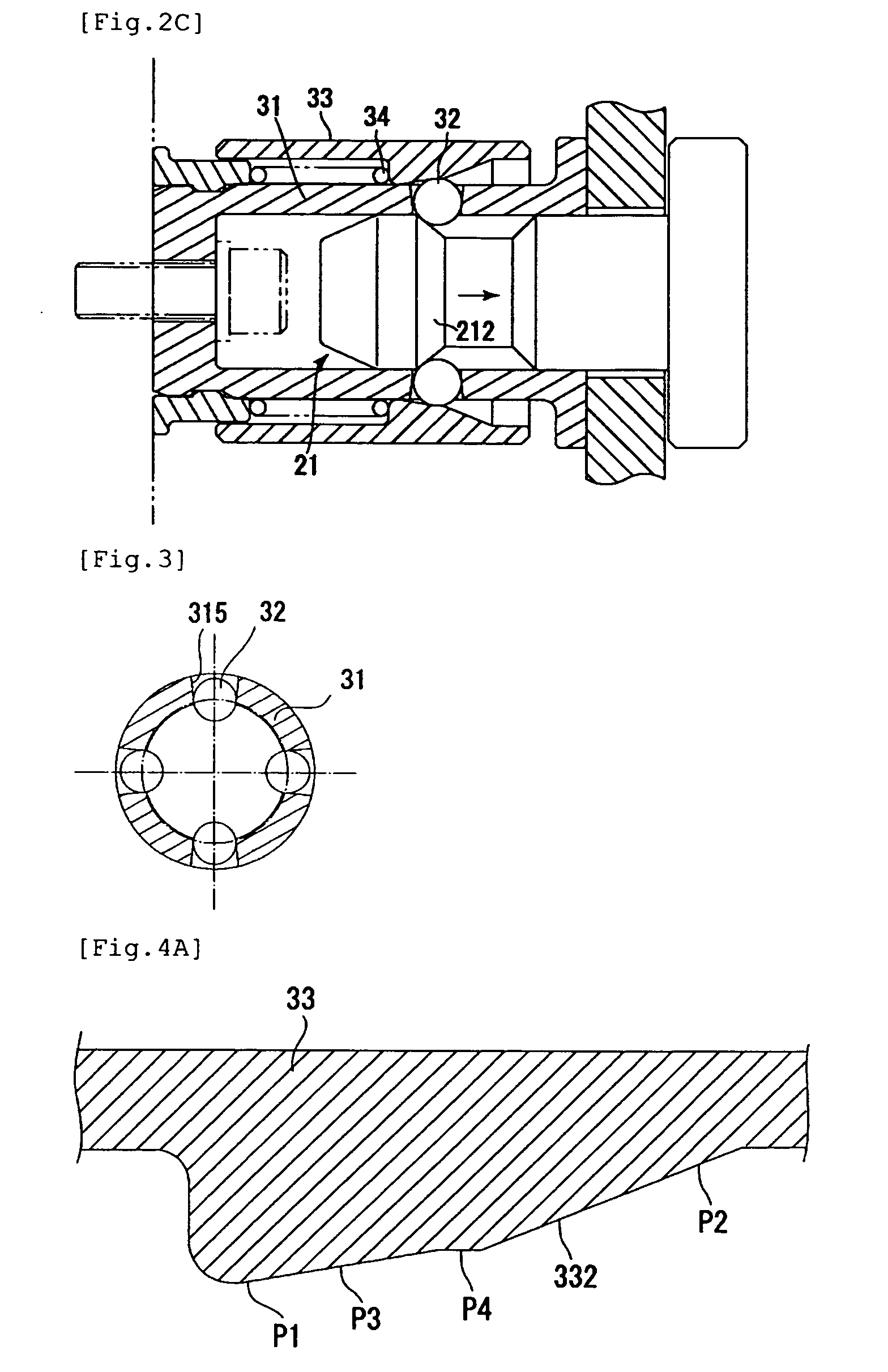Plug-socket assembly
a plug socket and socket technology, applied in the direction of rod connection, coupling device connection, mechanical apparatus, etc., can solve the problem of the plug coming out of the socket undesired
- Summary
- Abstract
- Description
- Claims
- Application Information
AI Technical Summary
Benefits of technology
Problems solved by technology
Method used
Image
Examples
first embodiment
[0039] the plug-socket assembly according to the present invention will be explained with reference to FIGS. 1 to 4A. In the following description, the term “axial direction” means a “direction along the longitudinal axis of the plug insertion hole” or a direction parallel thereto, and the term “radial direction” means a “direction extending radially” from the “axial direction”.
[0040]FIG. 1 is a longitudinal sectional view of a first embodiment of a plug-socket assembly 10. FIGS. 2A to 2C are views for explaining the operation of the plug-socket assembly 10. FIG. 3 is a schematic cross-sectional view as seen from the line III-III in FIG. 1. FIG. 4A is a fragmentary longitudinal sectional view of a sleeve.
[0041] As shown in FIG. 1, the plug-socket assembly 10 includes a plug 20 and a socket 30 that receives and secures the plug 20. The socket 30 has a socket body 31 having a plug insertion hole 311, and a locking element (assuming the form of balls in the illustrated example; herein...
second embodiment
[0053] A second embodiment of the plug-socket according to the present invention will be explained with reference to FIGS. 5 to 9. FIG. 5 is a longitudinal sectional view of the plug-socket assembly 10. FIG. 6 is a schematic cross-sectional view as seen from the line VI-VI in FIG. 5. FIG. 7 is a schematic cross-sectional view as seen from the line VII-VII in FIG. 5. FIG. 8 is a schematic cross-sectional view as seen from the line VIII-VIII in FIG. 5. FIG. 9 is a view for explaining the operation of the plug-socket assembly 10 according to the second embodiment.
[0054] The basic arrangement of the plug-socket assembly 10 is substantially the same as that of the foregoing first embodiment. Therefore, only the points in which the second embodiment differs from the first embodiment will be explained below.
[0055] In the plug-socket assembly 10 according to the second embodiment, the socket body 31 has, as shown in FIGS. 5 to 7 and 9, first and second sleeve-actuating balls 32a and 32b (s...
PUM
 Login to View More
Login to View More Abstract
Description
Claims
Application Information
 Login to View More
Login to View More - R&D
- Intellectual Property
- Life Sciences
- Materials
- Tech Scout
- Unparalleled Data Quality
- Higher Quality Content
- 60% Fewer Hallucinations
Browse by: Latest US Patents, China's latest patents, Technical Efficacy Thesaurus, Application Domain, Technology Topic, Popular Technical Reports.
© 2025 PatSnap. All rights reserved.Legal|Privacy policy|Modern Slavery Act Transparency Statement|Sitemap|About US| Contact US: help@patsnap.com



